This post is also available in:
日本語 (Japanese)
置き去られた鏡 The Forsaken Mirror by Chie Matsui 松井智惠 at Gallery Nomart, Osaka 4/20/24
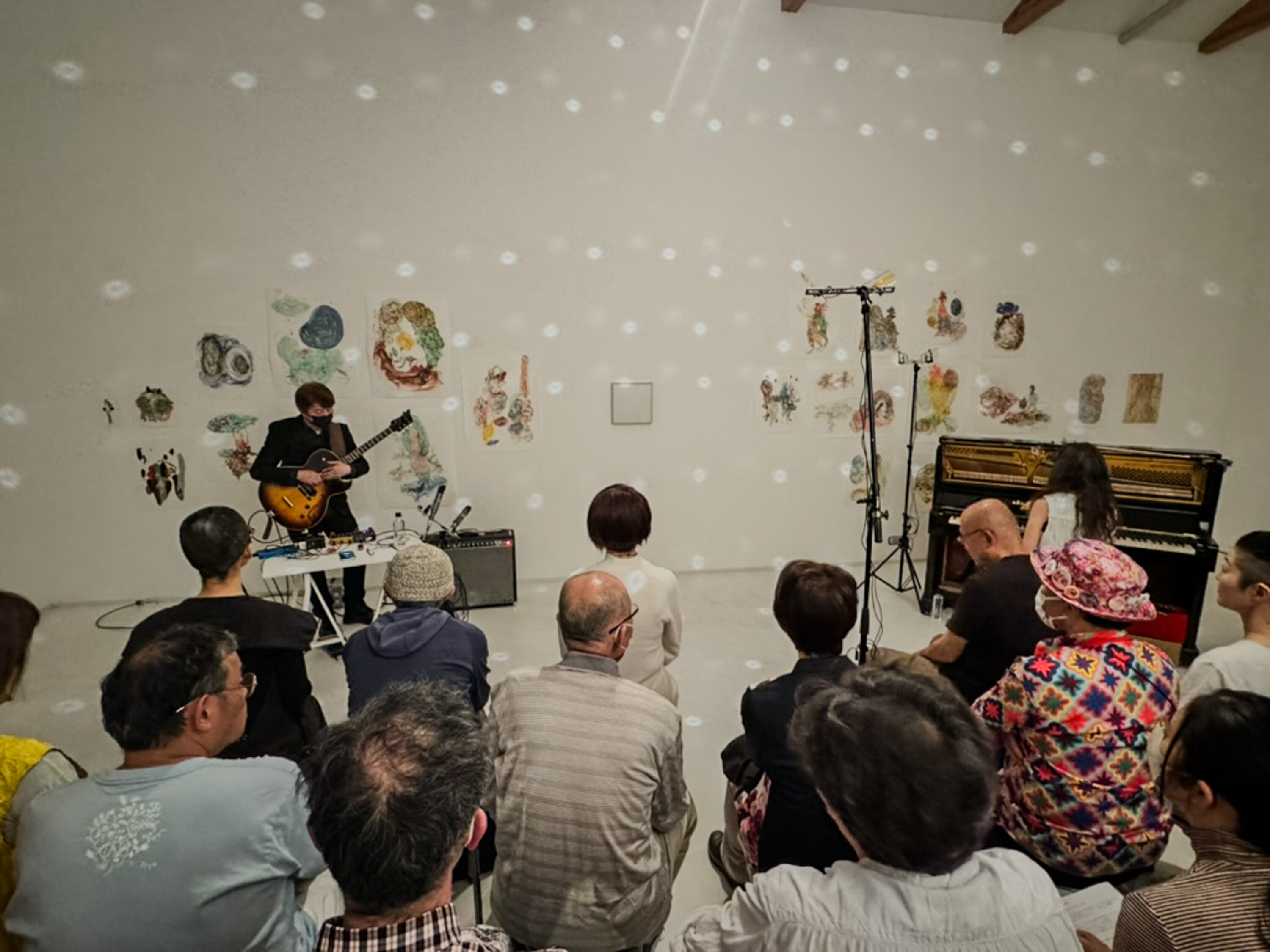 Photo © by Christopher Pelham
Photo © by Christopher Pelham
On my last night in Osaka, I scrapped my plan to see a concert whose musicians had not gotten back to me in order to attend a performance at the closing night reception for the solo exhibition 置き去られた鏡 The Forsaken Mirror by the celebrated artist Chie Matsui 松井智惠. From the event announcement, I couldn’t grasp what the performance or the exhibition would be like, but my friend and colleague Miho Tsujii 辻井美穂 was reading a poem in the performance and Miho said that Gallery Nomart consistently presented quality artists and I felt drawn to attend. I find that when I follow my inner guidance, even when it leads me into the unknown, I end up appreciating the experience.
The performance consisted of music by avant-garde musicians sara (piano, perc.) & Shin’ichi Isohata 磯端伸 (guitar) and a poem read in Japanese, Korean, and English by Chie, Yangjah, and Miho, respectively. At first, I didn’t know what to make of the performance or the abstract, brightly colored prints surrounding a centrally hung mirror. Eventually, in the space created by the disorientation and abstraction, I reflected on who these people were, who I was, and the various identities we experience throughout life, which proved enlivening.
I learned that earlier in her career, Chie’s work has been exhibited internationally at MoMA in NYC, at the Venice Biennale, and other prestigious venues and was highly respected. At one point, she described her works, many of which have been installations, as “devices with which to produce narratives, as well as methods of creating space that generates an overall physical experience for the viewers.” As I later learned, the other artists that Chie chose to perform at the closing reception also focused in their own work on transforming space in a way that creates a somatic experience for the audience.
In her exhibition statement, Chie stated that the Nomart Gallery owner encouraged her to exhibit there again after a 10-year hiatus, suggesting the theme of “Mirror” in connection with the monotype printmaking technique, a technique she had not previously used. Chie initially doubted whether she could work with that:
Monotype is a straightforward technique where paints and crayons are applied to an acrylic board and then transferred to paper. The resulting image is reversed from left to right, creating a simple texture without brushstrokes or raised areas of paint. Furthermore, only one impression can be made at a time. Why bother painting for the sake of creating a single transfer? The discrepancy between the profound word “Mirror” and the lightness of the finished surface was troubling and raised an unanswerable question.
The unknown can feel like an obstacle if we view it as inherently risky. But approached with curiosity, it can also instigate discovery. “I don’t know” implies an absence of preconception or projected interpretation, which opens space for us to observe and experience freshly and intently and receive new inspiration and understanding. Chie accepted the gallery owner’s concept precisely for this reason, “recognizing that I wouldn’t know the outcome unless I tried.”
For months, Chie came to the gallery several times a month to make monotype prints, accumulating more than a hundred without understanding what they might add up to or how they might illuminate the theme of “mirror.”
“The Forsaken Mirror”
In the morning, I stand before the mirror and let out a deep breath.
The slightly clouded surface of the mirror reflects the aging visage of a sleep-frazzled woman. Behind her is a green chest of drawers, an unfinished picture, and a pile of laundry. With my phone I snap a photo of my reflection, then look at the image in the palm of my hand.
In these times, with the scabs of memory continually ripped away, weighed down by conflicting narratives, I am driven to explore unprecedented approaches and perspectives on storytelling. The interlude before a scene becomes a spectacle, or vice versa, before the curtain rises on the stage, or even during the performance when actors wait in the wings to take the stage. These actors are us, living our daily lives, portraying ourselves. The light and the dark. Some interludes are spaces that let us move freely back and forth.
Our daily lives are a parade of sorrows and absurdities that are not easily healed. To reconstruct our narratives, we need spaces that become empty: galleries between exhibitions, boxes with their contents removed, hard drives with their data deleted. Monotype plates after printing, stripped of their color and imagery. These could be called interludes.
Have we stopped seeing ourselves in mirrors? In the dusk, my reflection has turned into a monotype, its pigment stripped away. A picture, emerging from the interlude, approaches from the other side of the mirror, letting out invisible breath.
Longing to meet again, full of the mischief of dawn and dusk, I let out a breath in front of this lone picture reflected in the mirror before me.
So, Chie suggests that we rarely see ourselves clearly and often become confused by both our perceptions and our self-consciousness about how others view us. And that this accumulation of perceptions and thoughts is not only confusing but traumatic. She sensed that we need to strip all this away to witness the stillness and beauty of our true mind and heal. In order to “see” ourselves clearly, we need to forsake the mirror, abandon what our eyes see, and trust our inner sight.
She sought to reflect this metaphorically by using the monotype printing process to strip away texture and detail. What results is unpredictable but, in some way, more skeletal, more essential. Some depict landscapes and human figures. One cannot always tell what they are doing or where they are. They are like fragments from a dream, mirroring the way images and memories float through our minds, pointing to something but lacking clarity.
The vivid colors contrast strongly with the whiteness of the background. Although they seem flat, they metaphorically open towards and away from us. They function as a gateway between the particular and the universal, not quite entirely either, yet inviting us to wonder about each other and, by extension, to reflect on what is essential in ourselves.
This evokes for me the famous statement by Jacques Lecoq, the legendary founder of the influential French theater school Ecole Lecoq:
“There are three masks:
the one we think we are,
the one we really are,
and the one we have in common.”
This also echoes something Tilda Swinton says about art in an interview I read recently in The New York Times:
Art offers us an opportunity to be quiet and still and to allow, in that stillness, for a connection to form. …an opportunity for you to look on something being played out in front of you. There’s levels of distance which are soothing to the nervous system. You’re able to observe, rather like in a meditation state. I think the superpower that art has is this distance it affords us, this capacity to be still and to allow resonances to arise from inside.
The article coincides with the release of Pedro Almodóvar’s new film, “The Room Next Door,” in which Swinton co-stars as a free-spirited and highly literate war correspondent with untreatable cancer. As her death approaches, she loses the ability to sustain her attention on writing, reading, listening to music, and the pursuits that most occupied her life. Unsettled at first, she eventually finds peace in simply taking in the sights and sounds of the forest around her house and, ultimately, in being itself. Rather than losing herself, she finds herself.
Similarly, I understood the live performance Chie organized for the closing reception as an effort to strip away the familiar and transform what remains to connect with the essential. She invited two musicians to improvise together for the first time as a duo and two other performing artists not known for speaking to join her in reciting a poem that Chie had written for the exhibition.
Improvising as a duo for the first time, Sara (.es) on piano/ percussion and Shinichi Isobata on guitar played wildly and inventively. Their unconventional techniques produced strange and unfamiliar sounds. I felt simultaneously unmoored and connected.
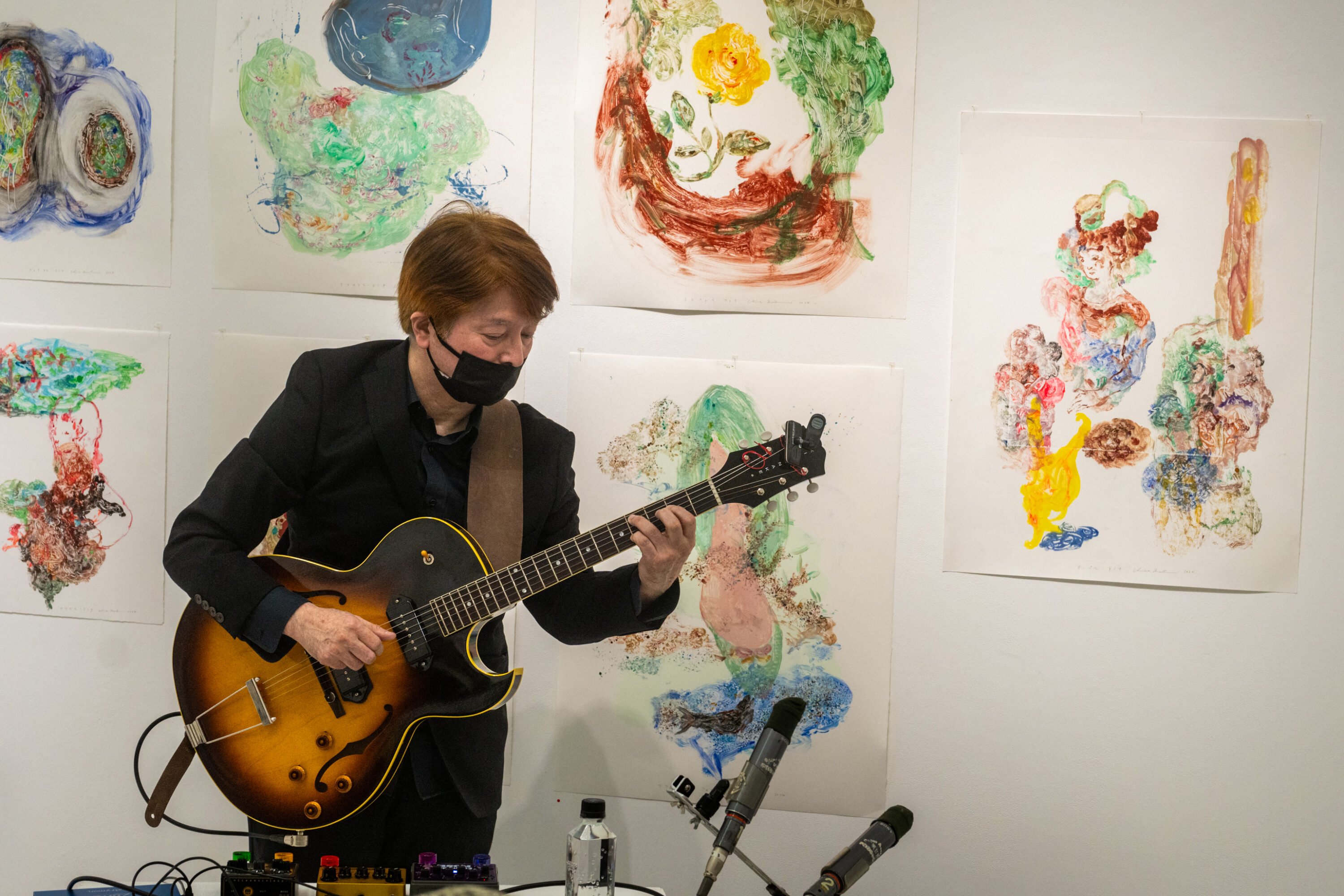 Photo © by Christopher Pelham
Photo © by Christopher Pelham
Shinichi Isobata
Sara (.es) says that she seeks to produce expression that is not limited to music or even to sound. Tremendous energy emanates from her body when she performs, adding to the vibrational presence that we feel beyond what we hear. Shin’ichi, who has been playing guitar since 1974, has also long explored experimental music and finds innovative ways to open up the spaces around musical notes and tones.
Coinciding with the music, Chie read a poem that she had written in Japanese while performance artist Miho Tsujii read it aloud in English and Korean Japanese butoh dancer Yangjah recited it in Korean. Slowly moving about the space in front of the artworks, they shared the poem repeatedly. Watching them also entailed watching ourselves reflected by the mirror hung on the wall amidst the prints. At times, one of the readers would pass in front, and our reflection would be replaced by one of theirs. There was always someone present in the reflection, but the specific image was transitory, mirroring how we experience ourselves as we travel through life.
Periodically, the three readers crossed paths. Hearing them speak in different languages, two of which I don’t understand, made it easy to forget they were reciting the same poem. They were not communicating conversationally but nevertheless seemed to be present with one another and with us. There was a communication of sorts beyond words.
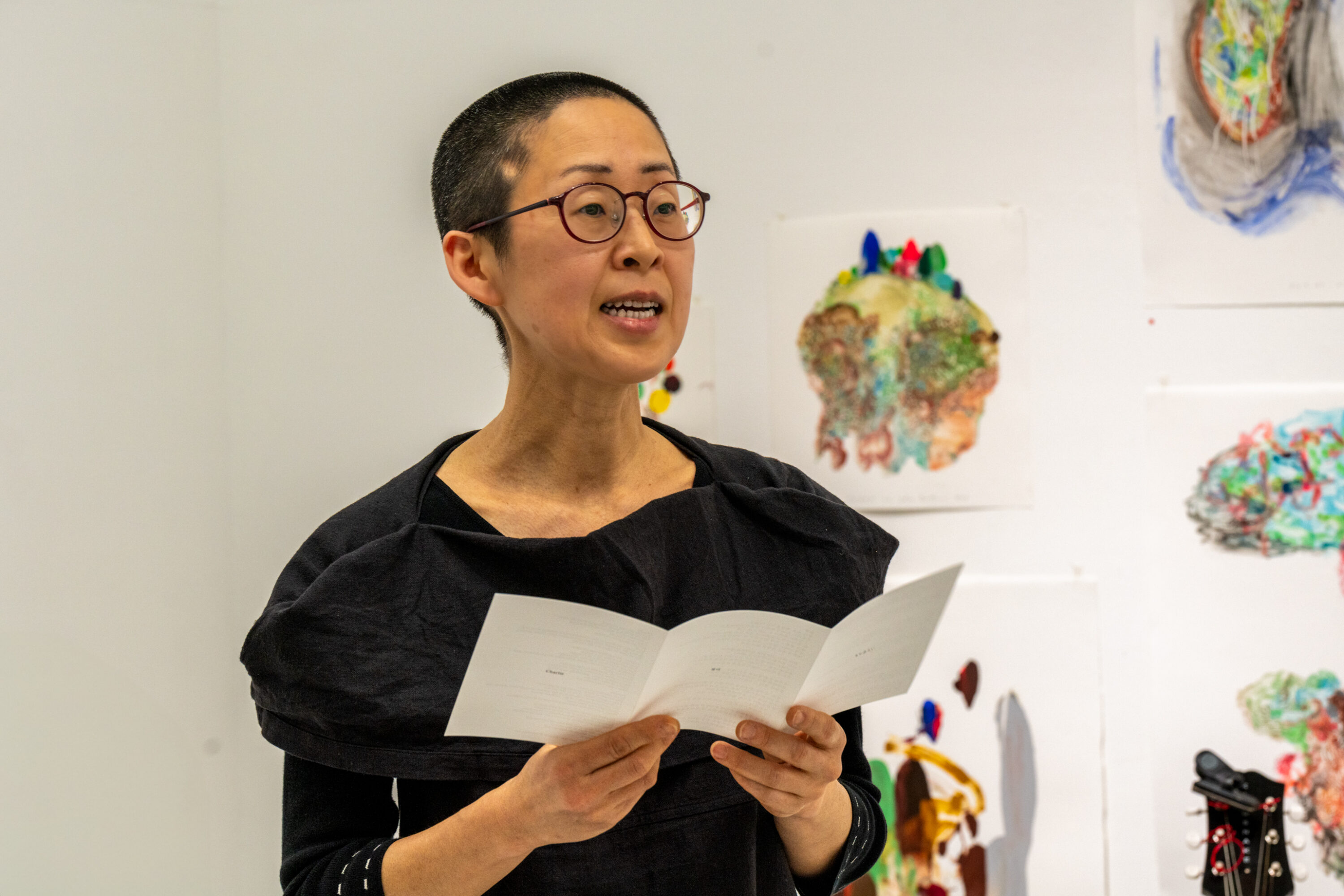 Photo © by Christopher Pelham
Photo © by Christopher Pelham
Yangjah
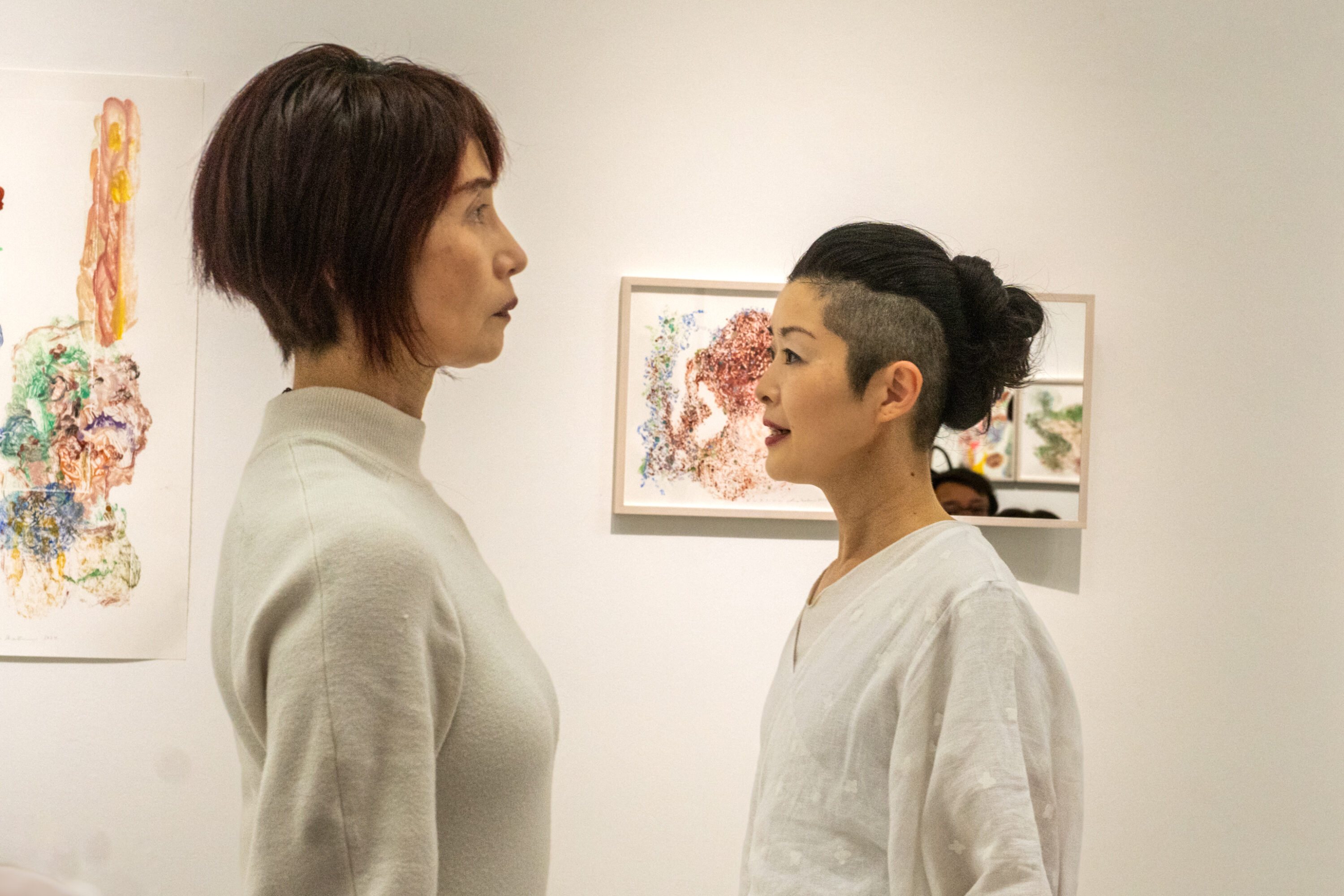 Photo © by Christopher Pelham
Photo © by Christopher Pelham
Chie Matsui and Miho Tsujii
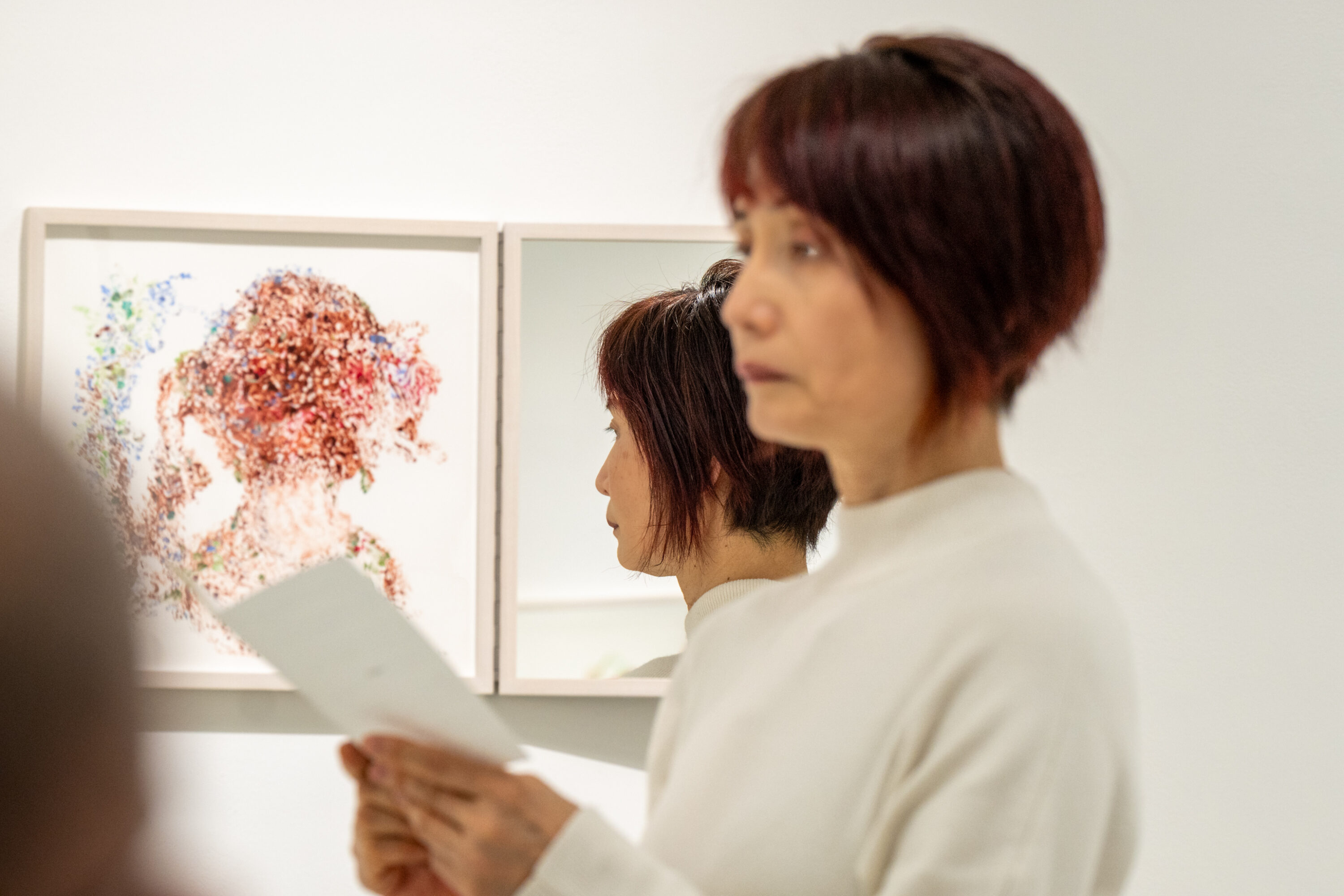 Photo © by Christopher Pelham
Photo © by Christopher Pelham
Chie Matsui
As a matter of fact, even in English, I’m not sure what the poem means. Sometimes, we don’t understand the artist’s intent or can’t hear or absorb the information well. Yet, we can sometimes still have a meaningful experience.
The poem refers to someone named Charlie, who eats eggs and is reflected in a mirror. The author asks Charlie if he sees himself and how he sees himself and invites him to accept himself beyond judgment. So it does relate to the exhibition theme in some way, but I received the recitations primarily as pure sound or incantations, an affirmation of presence. Even though Miho and Yangjah were more used to performing nonverbally — or maybe because of that? — I felt their presence strongly. They were not shouting or emoting, but a quiet strength emanated from them and included us in their strength. I think they were embodying what the poem was trying to express.
You can hear Chie introduce the exhibition and, together with Miho and Yangjah, recite the poem here:
I had a chance to meet Yangjah afterward. I had only ever met one other Korean butoh artist, Min Yoon, and she was based in Berlin. I was curious to hear how Yangjah was received inside Japan, where there is still a certain amount of anti-Korean sentiment. I also spoke with Miho at length, but I have known and worked with her for years and will save that conversation for another article.
Yangjah said that this first opportunity to read a poem to an audience was special because she started writing poetry recently. She also creates video art and permaculture as well. But she approaches these different mediums with a similar mindset. In a sense, awareness itself is her fundamental practice. She diligently seeks to take in deeply what is happening moment to moment inside her and around her every day, and she enjoys processing and transforming what she finds into expression in various forms.
When I’m home/my studio, I do meditation, exercises, cooking, answering mails, writing poems, meetings with collaborators, walking, reading books, sewings, gardening… When I work, I do dance performances, workshops of dance/poetry, sometimes works of interpretation and translation. I don’t think I do dance daily practices as much as people expect. I keep on observing my body and others’ ones in my daily life. Body is a must for dancing, and luckily I’m always with my body. If I’m a painter, I need to prepare materials in front of me. I don’t need to prepare anything for dance. I can just be aware of my body and dance will start.
Like many artists, she lives frugally, avoiding many of the niceties and complexities of the modern world that can clutter one’s life and occupy one’s attention.
I noticed the cost of my living is less than ones of people’s living with support of welfare by Japanese government. But I feel my life is affluent because I try not to rely on money fully. It means I have more energy and time to create my life. For example, I’m not interested in eating out at gorgeous restaurants. I prefer cooking by myself, gardening without my own garden, inviting friends to share food, or potluck parties. I feel more creative energy when I make something with my hands in my daily life. For me, the habit can be a basement for creating art works. I hope I will not be a slave nor make someone a slave for me. Sharing skills is a beauty in human’s life, but unfortunately exploitation is a common in Capitalism. It’s my challenge of balancing between reality and ideal.
Yangjah has been balancing her whole life. A third-generation Korean-Japanese, she moves back and forth between Osaka and Jeju Island, South Korea, where one of her grandmothers still lives. She loves both but is viewed as an outsider in each. Like many Koreans, her grandparents came to Osaka to work during WWII when Japan occupied Korea. While some Koreans did find greater economic opportunity in Japan, most faced severe discrimination and hardship. Some sought to assimilate to avoid harassment. Even now, while many Koreans visit and live openly and happily inside Japan, some Korean Japanese still keep their origins secret to avoid difficulties. Amazingly, many Japanese are not even aware of this history and reality.
According to Yangjah, many Koreans don’t know much of the history of Koreans in Japan either. “Lots of Koreans recognize me as a Japanese with my culture. Japanese recognize me as a non-Japanese with my name.” She didn’t think it caused much problem for her, but her awareness practice has made her more attuned to its effects on her. “I didn’t think microaggressions were so serious before. But I realized that microaggressions which I experienced have piled up in me and became a huge stress after I left Jeju during the pandemic. I have wonderful friends in Japan and Korea, and I love living in both because my life has deep connection with two countries. I love them just because I accept everything….”
Being an island, Jeju, although a part of Korea, is a world unto itself. As I learned at the new Osaka Korea Town Museum, Jeju is the birthplace of the traditional culture of female divers for shellfish. It’s grueling and dangerous work, and the women are renowned for their hardiness and independent spirits and for spreading the culture throughout East Asia. Sometimes referred to as the Hawaii of South Korea, Jeju culture is known for its close connection to nature and strong matriarchal spirit — which was also once said of the former island Kingdoms of Hawaii and Ryukyu, what is now Okinawa. Its landscape is celebrated for its stunning volcanic landscapes and coastline. Compared with hyper-modern and fast-paced Seoul, life on Jeju is slower and more rooted in tradition.
On Jeju, Yangjah met a Korean-American woman who is a permaculture designer. “I took a permaculture design course in Korea and realized the theory is really familiar to my lifestyle. Permaculture focuses on sustainability and the circulation of energy is strongly related to dance.” Just as she seeks to cultivate a relationship with land and nature that does not deplete it but allows for a mutually sustainable exchange of energy, Jangjah in her dance work seeks “to circulate moments which can become fulfilled through an empty body produced in time and space as a ritual.” By empty body, she means free of ego or overthinking and informed by presence, sensing, listening, receiving, and mirroring or exchanging energies with the audience.
Although Yangjah loves immersing herself in this way of living on Jeju, she could find fewer opportunities to earn any income there, so she continued to return to Osaka to work and perform. When the pandemic hit, she was stuck in Osaka and unable to return to Jeju for a long time. Rather than view this as a negative, she used the situation to her advantage to deepen her practice.
“The pandemic became an opportunity to ask myself what is the priority in my life. I strongly determined to keep on my practice to seek truth of life. …I started daily poetry writing at the end of the pandemic finally, keep on the practice and sometimes I work with people for improvised poetry performances and workshops.”
The forced isolation brought on by the pandemic opened a space in her life from which poetry could spring. Where she had once devoted her time to growing plants, she now cultivated words and images. Although now metaphorical rather than horticultural, her gardening practice continued to be based on loving attention and a sincere desire to bear witness to and honor what is present. I sense in her an appreciation that presence is endlessly abundant and that giving and receiving are the same. So, at the root, all her practices — dance, permaculture, and poetry — are expressions of this recognition. They extend abundance rather than chase after it.
This internal/psychological state of abundance allows her to live contentedly on a minimal budget and with minimal participation in the capitalist system. This has also allowed her to live and work free of the pressures of goals, self-judgments, and calculations that come with them. Instead, she can focus on experiencing each moment fully and enjoying whatever gift it presents rather than evaluating it for its potential to assist or harm her ability to realize future goals. “I have never had goals, purposes or dreams. I wondered why I didn’t have dreams in my childhood. As I grow, I have realized my life has more tremendous possibilities which I can’t even expect. I feel grateful receiving gifts of life.”
I asked Yangjah if this is characteristic of Butoh or if the Butoh community, which, for the most part, is an “underground” community, provides an ideological foundation or practical support network for living more freely. She replied that she is wary of taking on labels or associations. “I think ‘Butoh’ and the community also tend to be conservative once they have their own titles unless they keep in mind to be free from authority. There is also sexual/power harassment in the Butoh world. That’s also a reason why I am an independent artist.”
In fact, just as she came to be more aware of micro-aggressions directed toward her for being an ethnic minority, Yangjah’s meditative practice has also helped her to become more aware of the traumas she was holding as a result of sexual harassment she experienced when she was younger. “Recently, I have realized that I try to neglect the pains that I experienced in the past. Some friends worried about me, and we had deep conversations about a small sexual harassment that I had. I tried to behave OK because I wanted to believe I’m strong. I have just found out I was acting like that. I need to be sensitive to myself first.”
When I step back and reflect on the commonality of what I have received from my encounter with Chie and Yangjah and their art, I think the essence is listening and attention. Creation begins not with an idea but with tuning in to the present moment, delving deeply into it, discovering inspiration there and translating that into a sharable form.
For Chie and Yangjah, this process of tuning in is itself a fundamental part of what can be shared with an audience. In fact, it is inherently shared energetically. The tuning in includes taking in one’s surroundings. There is a melting of boundaries and a mingling of inner and outer. We each have a subjective experience, but it is also shared and interdependent. Our energies circulate and nourish, reflect and transform. Consciousness itself is an ever-unfolding communal work of art.
Chie Matsui
https://chie-matsui.com
@chie_matsui
Miho Tsujii
https://mihotsujii.com/
@mih0tsujii
Sara (.Es)
https://www.nomart.co.jp/dotes/
https://www.soundohm.com/artist/sara-es
https://www.squidco.com/miva/merchant.mv?Screen=PROD&Store_Code=S&Product_Code=33905
Shin’ichi Isohata
https://o-musubi.blogspot.com/search/label/00%20profile
@o_musuvi
Yangjah
https://yangjah.wixsite.com/yangjah/cv
@yangjah_emptybody
Gallery Nomart
https://www.nomart.co.jp/
@nomart_inc
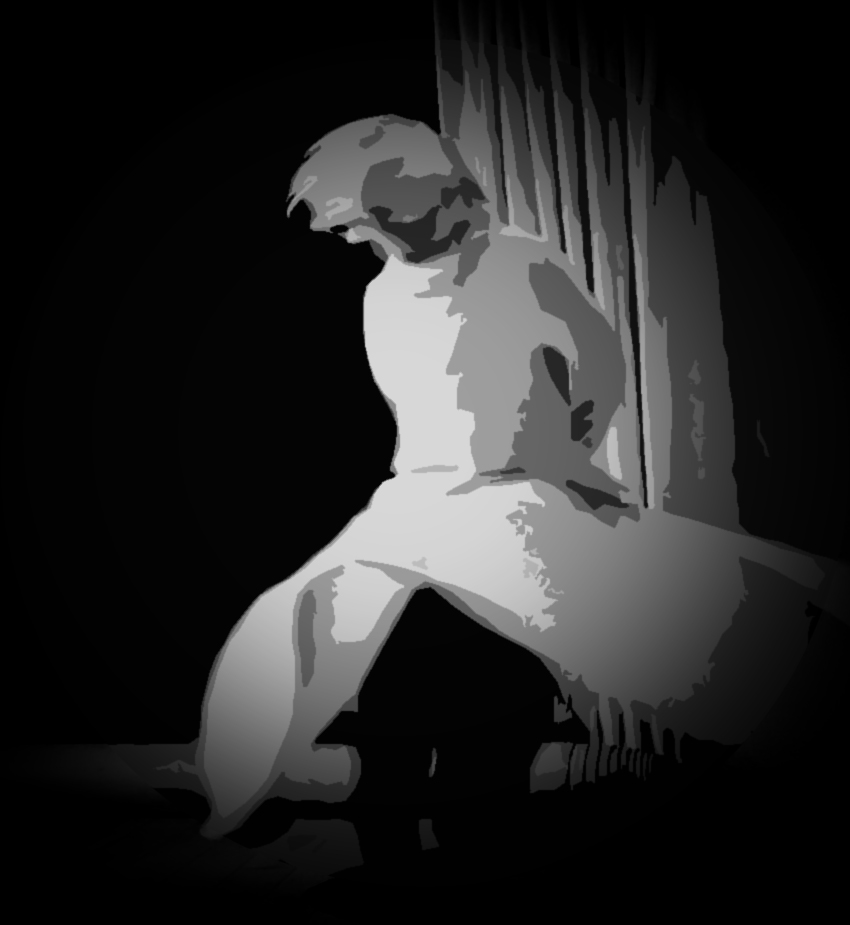
0 Comments